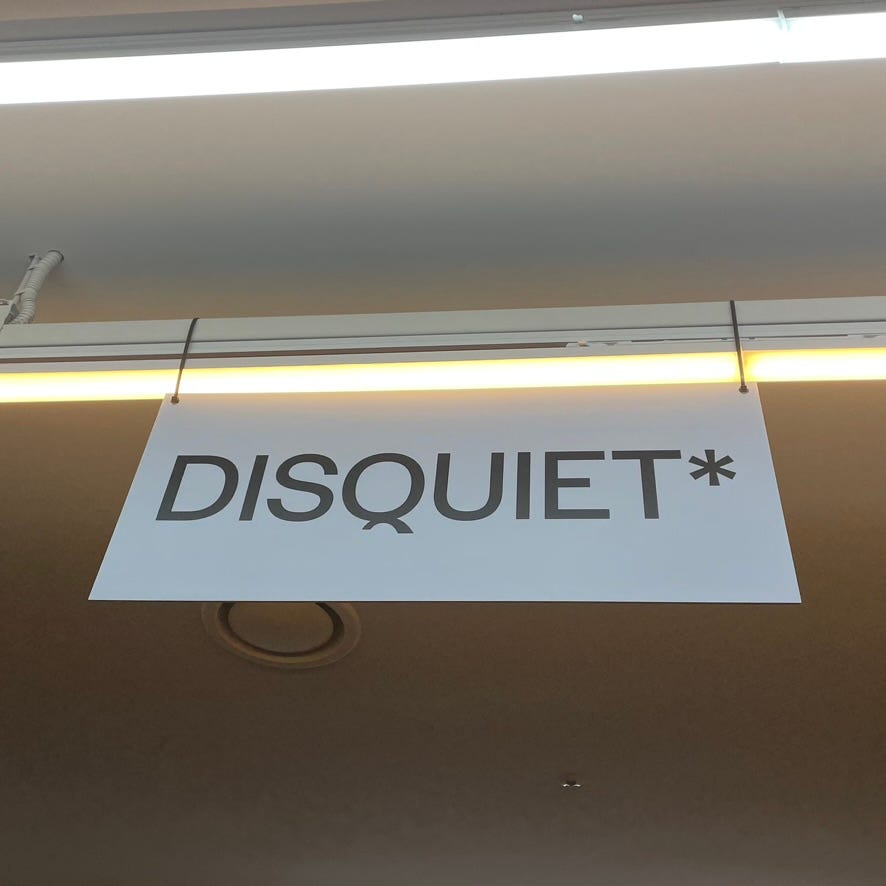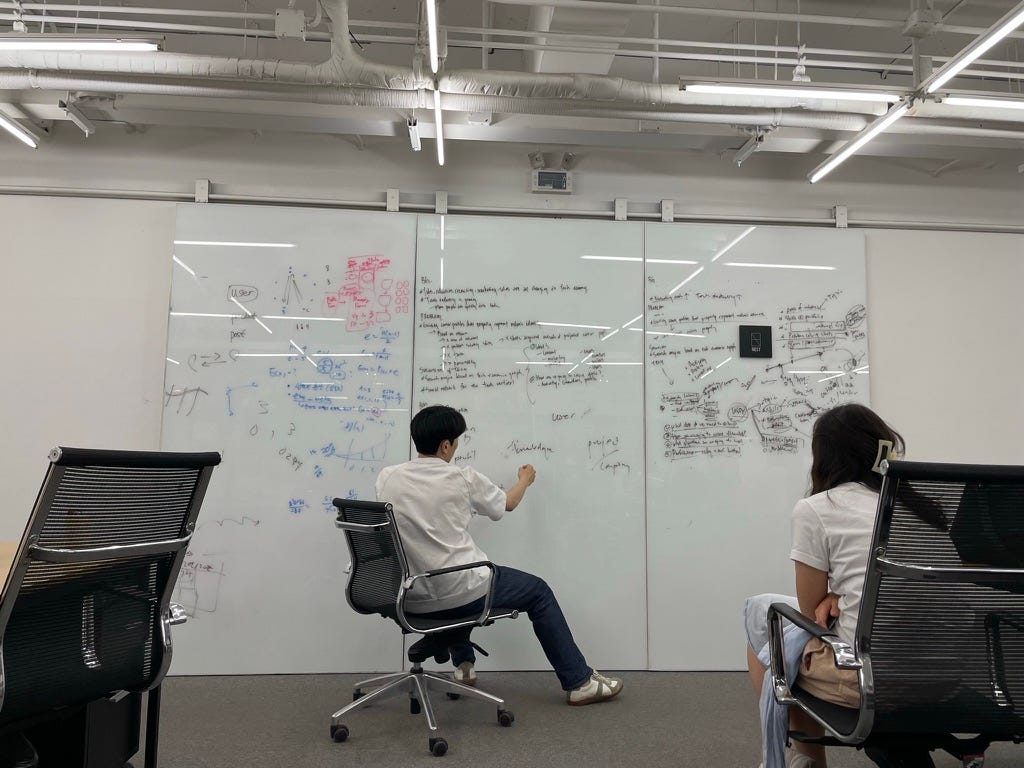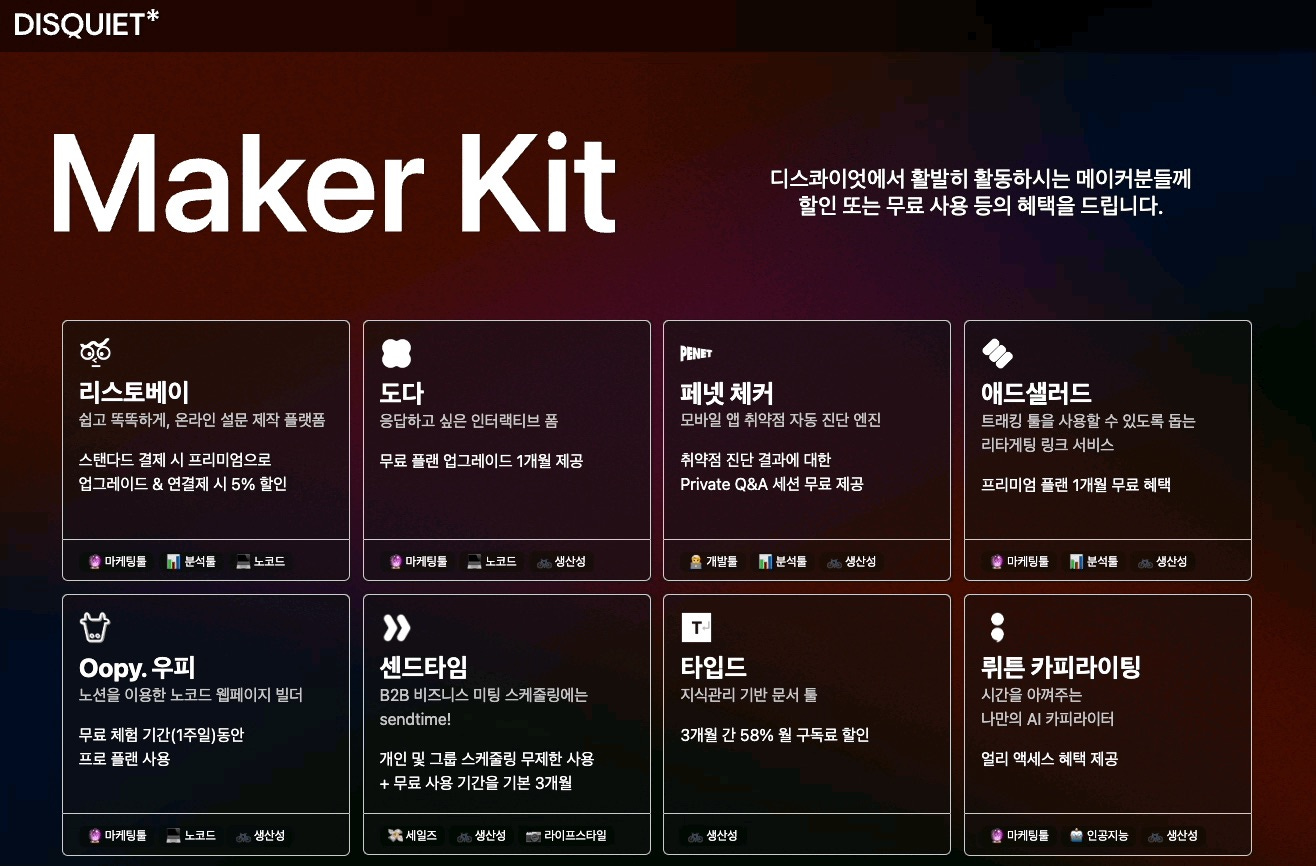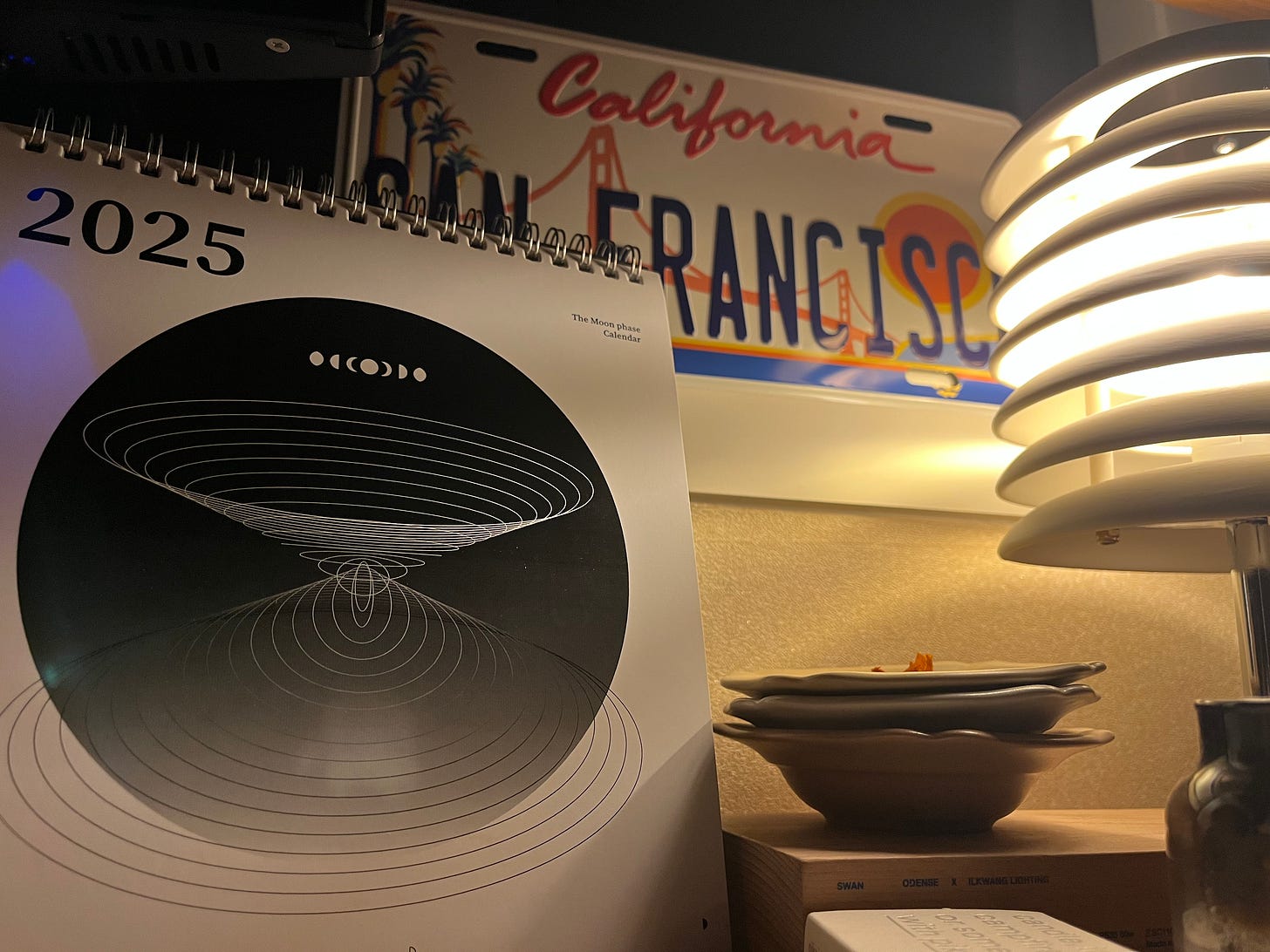Reflections on Disquiet
This text was originally written in Korean on December 31, 2024, and has been translated into English and uploaded
This year, instead of a 2024 reflection, I looked back on the past three years since joining Disquiet. I jotted down what I’ve learned compared to when I jumped in knowing nothing. One thing that stood out while reflecting is that there’s a massive gap between hearing startup gurus share their experiences through talks, articles, or videos and actually diving in to figure things out myself. Things like why market size matters, why team building is such a big deal, and why founder-market fit—or finding a problem I can get obsessed with—are so critical. These past three years have been more intense than my entire life before, opening my eyes to new perspectives.
The major events over the past three years are as follows:
2022
January: Joined Disquiet after leaving the military and dropping out of college; team of 3, including me.
February to June:
Ran cohort programs like Maker Club and Challenges.
With COVID easing up, hosted offline events (Lounge, plus collabs with Always, Revenue Market, Mashup Ventures, etc.).
Moved into MARU and joined the Jung Ju-yong Startup Competition.
July to December:
Raised Pre-A funding; team grew to 6.
Won Excellence Award at Jung Ju-yong Startup Competition Demo Day, officially moved into MARU360, had a booth at Comeup 2022, got into TIPS, and more.
Worked with VCs and accelerators like The Ventures, 500, Mashup, and Sopung Ventures on deal sourcing.
Tried a SaaS affiliate partnership with MakerKit.
2023
January to June:
Kicked off Community-led growth initiatives like MakerTown and club activations to boost B2C growth.
Ran PMC S23 with 80 early-stage startups and indie makers joining in.
Built recruitment features and tested business models.
July to December:
Ran PMC W23 with 60 teams working on AI and SaaS.
Team grew to 8.
Hit 100,000 MAU.
2024
January to October:
Rebuilt the team.
Ran Maker Sprints.
Started an advertising business.
Hosted PMC S24 with 160 teams participating.
November to present:
This post might be especially helpful for these folks to check out:
People thinking about starting a startup or in the early stages.
Anyone curious about B2B2C products or businesses.
Those interested in platforms or social domains dealing with cold start issues.
People looking to get into (text-based) content businesses.
ㅤ
Market and Product Growth
Disquiet’s mission and first hypothesis: Gather software makers on an SNS → Exchange through product content → Match with the right co-founders and team members (recruitment BM) → Create better software (a virtuous cycle for more makers and product content).
To make this happen, we first needed to bring people in. How do you get people to join? By offering content they can’t find elsewhere but want to see. At the start, we created it ourselves, then gradually encouraged users to contribute. The challenges we faced are ones most platforms or content services are likely to run into.
1) Solving the Cold Start Problem
Creating and Distributing Content Ourselves
In the very early days of Disquiet, Hyun-sol personally put together the Disquiet Magazine, curating insights on IT products and startups. The high quality of this content spread by word of mouth, drawing users in. Practicing building in public—which wasn’t common back then—also helped a lot. Hyun-sol wrote articles explaining why he started Disquiet and what the plans were, even publicly recruiting co-founders. We also launched a series called Maker Stories, interviewing early-stage startup founders and indie developers—a format that wasn’t widespread at the time—which brought in a ton of users.
Disquiet Magazine: https://blog.disquiet.io/blog-categories/maker-story
Since then, we’ve consistently produced and shared high-quality original content, driving anywhere from a few hundred to over 10,000 visits per piece. By the way, all our content was text-based. Here are some examples:
https://disquiet.io/@williamjung/makerlog/claude로-코드리뷰-경험-개선하기
https://disquiet.io/@williamjung/makerlog/앞으로-모든-코드의-90-는-ai가-작성할-수-있도록
https://disquiet.io/@kwondoeon/makerlog/최경희-파트너님과-의식의-흐름-대화하기
Encouraging Users to Create and Redistribute Content
Creating content ourselves let us control quality and plan with clear intent. The downside? It’s tough to automate or scale. Ultimately, we needed users to produce quality content, which meant giving them a clear reason to post on Disquiet. To figure this out, we interviewed users about when they felt motivated to create content. It came down to three main needs:
They want to promote something (products, funding, hiring, personal branding, etc.).
They want feedback (on their products, challenges, etc.).
They want to document their journey.
Of these, promotion was the most urgent need. Feedback often didn’t work if Disquiet’s users weren’t their target audience, and documentation could be done in a personal notebook. From the Fogg Behavior Model perspective, promotion is hard but highly motivating.
So, we focused on creating and spreading more examples of how Disquiet helps with promotion. We did two things:
Curated and distributed great user content.
Collected and shared success stories of using Disquiet.
When I joined, product-related posts were in the single digits per day. I read every piece users posted, adding anything good to our curation list without delay. I also reached out to users individually, asked for feedback, and requested they share positive experiences or wins from using Disquiet. Here’s how we curated:
Compiled and interviewed cases where users hired team members, gained users, or secured funding through Disquiet.
Sent weekly newsletters summarizing products we tried and maker logs we read.
Created themes like “Products using Notion,” “Services for gamers,” or “Startups at COMEUP.”
Published playbooks on how to best use Disquiet.
We rotated these approaches and kept going, which had a huge impact. The number of posts on Disquiet jumped from under 100 a month to as many as 1,500 at peak times. Here are some key curation examples:
Building a Flywheel
But these efforts weren’t sustainable long-term. To truly solve the cold start problem, we needed the network to grow on its own. For that, we defined Disquiet’s flywheel and used it to prioritize growth efforts:
B2C: Spread authentic maker logs → Attract IT professionals → Some sign up → They write maker logs → Share them externally → Attract more IT professionals.
B2B: Increase meaningful IT maker accounts → Recruiters, VCs, sales reps join → They make offers via contact → More IT makers join to receive offers.
We thought hard about where the bottlenecks were and which tweaks would boost the entire flywheel. We adjusted things like sign-up conversion rates, post creation rates, and external sharing of products/maker logs. As I’ll mention later, we didn’t quite get the flywheel spinning smoothly.
ㅤ
2) People Crave New Content, and Content Lifecycles Are Getting Shorter
Content Perspective
People love fresh content. Even the same info repackaged differently, insights from a new source, or entirely new topics—anything predictable or familiar gets ignored over time.
Disquiet faced this too. Most makers go through similar struggles before finding product-market fit, and building in public content starts to feel repetitive. Titles like “How I got XXX users in N weeks,” “Validating MVP with no-code,” or “Getting my first paying customer”—even if the content is new, people who’ve seen similar headlines won’t click. This leads to more sensational hooks and higher fatigue.
It’s not just content; products face the same issue. We’ve seen endless diary apps, to-do lists, scheduling tools, and news aggregators. Unless there’s a novel UX, technology, or design, they feel stale. And unless you’re an early adopter, you’re not checking out every new thing. Honestly, even I don’t find every product on Disquiet exciting or worth trying—only a handful stand out.
Format Perspective
Disquiet’s content is all text-based, especially long-form until recently. The problem? The broader trend is toward short-form video.
Text is easy to create—just type—but hard to consume; it takes effort to read. Video is tougher to make but easier to watch. Most consumers prefer video.
Disquiet’s long-form text, focused on insights rather than entertainment, wasn’t something people turned to for fun. That made it more niche. With similar content available in video form, competition got tougher. We should’ve shifted to other formats sooner, but we didn’t.
ㅤ
3) There Are Few Constants for Viral Content
Does spending tons of time or money on content guarantee success? Do more subscribers mean more views? Usually not. Billion-dollar movies flop, and Netflix shows get buried. Assuming the KPI is traffic (views), a low-budget meme short can have a way higher ROI. So, money, time, or a big following aren’t guarantees of viral content. I think the constants are timeliness, trustworthiness (consistency), surprise, and shareable/save-worthy organized info.
Timeliness
Humans have a survival instinct triggered by threats or fear of missing out. Timeliness taps into that. Old news doesn’t affect survival—it’s already known or irrelevant. But things like:
AI is replacing designers? And coders?
Optimus was unveiled yesterday and might replace factory workers?
Notion’s new features could replace SaaS tools?
These matter to individuals and companies, so they get attention. For high views, timely topics are a must.
Surprise
There’s too much content out there, and most of it is similar. To stand out, you need a twist. Covering the same topic but saying what 90% of others don’t, or offering a contrarian view, adds value. Or, if a light piece turns out to be packed with insights, it’ll do well.
Shareable/Save-Worthy Organized Information
Word of mouth matters for content. For that, there needs to be a clear reason to share, like well-organized info worth saving or passing along. Think:
A playbook with 10 must-knows for startups.
5 sites every developer should know for job hunting.
A roundup of recent AI model updates.
CRM templates for outbound sales.
Must-know Figma plugins for designers.
These are neatly listed or turned into infographics, making them easy to bookmark or share with colleagues.
Trustworthiness (Consistency)
Even without the above, content can succeed by building trust over time. You’ve probably watched something not for the topic but because you like the creator/channel/company—like, “I’m not into org culture, but Lenny posted it, so I’ll check it out,” or “I’m not buying an iPhone, but MKBHD is always fun,” or “Paul Graham is the GOAT, so I have to read it.” This “trust and watch” level is the hardest to reach. It takes consistent content creation with maintained or improving quality.
The problem? Knowing this is one thing; doing it is another. Timely content needs quick turnaround, which can hurt quality. Adding a twist without depth feels forced. Organizing info well takes effort. And building trust is, obviously, really hard. Unless you can pour all your resources into content, it’s a tough challenge.
ㅤ
4) One Source Multi Use, But Posting Only on Channels with High Traffic
If you’ve ever created content, you’re probably familiar with this concept: taking a single piece of content and posting it across multiple channels. If you manage social media, you’ve likely done it at least once. It feels wasteful to put effort into crafting content and then share it in just one place, and since visibility is what matters most, more and more people are adopting the "one source, multi-use" approach. Of course, it’s a tedious process, which is why there are plenty of SaaS tools designed to help. Naturally, the majority of people posting on Disquiet also share their content on other platforms like LinkedIn, Threads, Facebook, Instagram, Substack, and more—channels with monthly active users (MAU) ranging from tens of millions to billions.
These platforms already benefit from strong network effects thanks to established followers, connections, and algorithms, so it’s no surprise that posts there get more views than on Disquiet. Plus, most social platforms differentiate between impressions (the number of times a post appears in someone’s feed) and views (the number of times it’s actually clicked), often emphasizing impressions first. This can make their numbers look significantly higher compared to Disquiet’s view counts. Since these metrics are the strongest incentives for creators, they increasingly skip posting on Disquiet and focus on other SNS platforms instead.
A quick aside: For similar reasons, platforms that have already captured most of the network effect are emerging in Korea too, making it tough for new social or platform products to break through. Still, I believe it’s possible by first building a utility that works well even for solo users—something the big players don’t offer—and then expanding into social or platform features later. One criterion for a good utility is the concept of decoupling: if competitors try to replicate your utility, it would harm their own service.
Not sure if this is a perfect example, but imagine if LinkedIn created a sales or recruiting AI agent. Their main end-users—sales reps and recruiters—might get replaced by the AI and stop using LinkedIn altogether. Or if Musinsa (a fashion platform) allowed users to design clothes with AI and produce them on demand, it could threaten the existing fashion brands on their platform.
Since Disquiet has worked hard to build traffic, the idea was to leverage it as a go-to-market (GTM) channel for utilities or SaaS, which led to features like Maker Search and Recruitment. A similar approach has been successful for Every.
https://disquiet.io/@williamjung/makerlog/유료-뉴스레터를-구독하면-ai-saa-s를-무료로-줍니다
ㅤ
5) Intermediary Business
Wherever people gather, there’s inevitably a need to connect with others: team members, investors, customers, friends, or even partners (?). Among these, the biggest market aligned with our mission was recruitment, followed by frequent inquiries about advertising.
Recruitment
Disquiet’s advantage over other recruitment platforms is that it’s a service people visit even when they’re not actively job hunting. This subtly nudges people who aren’t thinking about switching jobs and gives companies a reason to promote themselves on Disquiet.
Indeed, many people started asking if Disquiet had a recruitment feature, confirming the demand. Thanks to GPT, we thought we could quickly build something like a Maker Navigator (similar to PeopleGPT), so we attempted to develop and sell a recruitment feature.
First, we interviewed job seekers and employers on Disquiet and identified the following key issues:
Job Seeker Perspective
Information Access Issues
It’s hard to find reliable info on startups. LinkedIn posts are often overly polished, highlighting only the positives, so it’s tough to know if it’s a good fit without meeting someone or working there.Content Creation Challenges
I know personal PR is important, but it’s awkward to do it while still employed.
Writing honestly about my experiences or thoughts is difficult.
Posting publicly feels pressured, like I have to write something flawless.
Employer Perspective
Talent Pool Issues
It’s hard to find people with a maker mindset or entrepreneurial spirit on existing recruitment platforms.
Hiring through personal networks is too limiting.
For early-stage teams, finding senior or CTO-level talent who understand the business and can quickly build and launch an MVP is challenging.Recruitment Process Challenges
Without a technical person on the team, hiring developers is tough, so we rely on consultants.
Judging people from online profiles alone is difficult. Sometimes, coffee chats reveal discrepancies between profiles/resumes and reality.Issues with Existing Solutions
Existing recruitment solutions charge high fees (typically 5-7% of annual salary), which is burdensome.
Filtering through tons of irrelevant applications is time-consuming.
Detailed filters reduce the candidate pool too much, so we end up using minimal filters.
When hiring is tough, we post on every platform possible, but managing them is a hassle.
Here’s the crux:
Cold Start Again: In recruitment, employers are the suppliers. Without job openings, nothing works. So, we need to attract appealing companies and make them stand out, enticing people to want to switch jobs, which then motivates employers to polish their profiles and post openings.
Recruitment is Costly: We need to make the matching process fast and efficient to lower CPH (cost per hire) and TTH (time to hire). If it’s cumbersome and slow, companies (and their reps) won’t bother posting jobs.
We tried various approaches: recruiting about 60 job-seeking makers to write about their product-building experiences in maker logs and matching them with startups, interviewing and creating content from some cases, adding a feature to import LinkedIn profiles to quickly fill out profiles, contacting companies to get their job info and posting on their behalf, and more.
The problem was that while we focused on validating the recruitment hypothesis, our B2C metrics started declining. Without solid MAU, retention, and new sign-ups, Disquiet’s core community would die, leading to a shrinking talent pool, and then companies would have no reason to recruit here. So, we decided to prioritize B2C metrics again and focus first on increasing completed user profiles.
Some recruitment-related actions:
https://disquiet.io/@disquiet/makerlog/코파운더를-찾은-bolta-메이커-문혁님의-스토리
https://disquiet.io/@kwondoeon/makerlog/업데이트-메이커리스트-활용법-커피챗-가이드
Advertising
We received a lot of inquiries about advertising and experimented with premium content, side banners, and newsletter promotions. We didn’t aim to revolutionize the ad industry; here’s a quick summary:
Disquiet’s traffic is smaller compared to other ad channels, so competing on metrics like CPM, CTR, CVR, or CAC was tough.
Instead, we targeted:
IT companies needing branded content for a niche startup audience.
B2B companies with naturally high CAC/CPC.
Some ads performed better than Meta due to precise targeting, but this wasn’t broadly applicable, making scaling difficult.
Here are some ad content examples:
ㅤ
6) Community
Disquiet grew through word of mouth by creating an authentic community for makers. I was genuinely committed to building a great community and learned a lot in the process. By "community," I don’t mean Discord/Slack channels or cohort programs that meet regularly. I mean an ecosystem, like Silicon Valley.
Clubs
Around the end of 2022, we launched the Clubs feature. As Disquiet attracted more users and content, we needed to organize by interests for better UX, discover moderators to consistently create content, and test community-based business models, among other goals.
Ultimately, the Clubs feature didn’t perform as well as expected, for a few reasons:
While categorizing was a good idea, finding moderators to consistently supply content for specific categories was extremely hard.
Competing with other community SaaS platforms (Slack, Circle, Discord, etc.) on features was tough, making it costly to attract moderators.
No matter how good the utility, the community’s survival depends on the moderator’s capabilities, which is hard to control. Whether it’s Slack or Circle, if the moderator isn’t active, the community dies.
Most users left after getting the info they wanted from the club. I understood why Naver Cafes have ranking systems and NFT communities measure contributions.
It takes a long time for a community to reach the tipping point where it grows on its own without dying. Like 생활코딩, you probably need at least 100,000 members in one network.
Some club-related actions:
모더레이터 모으기
Maker Town: A challenge with 8 maker teams using clubs to build user communities for GTM.
To activate the Clubs feature, we ran projects like CCM (Community for Community Makers), targeting makers interested in community building. We attracted members with a free Community Playbook and even ran paid studies.
Club Activation
We fostered various clubs, starting with the Building in Public club, which was central to Disquiet’s maker culture. It recorded the highest number of posts and engagement among all clubs.
https://disquiet.io/clubs → Club List
Events
Disquiet hosted offline events to provide the best online and offline experiences simultaneously. We used them for various strategic purposes like MAU, engagement, or profile acquisition. Here are the main Disquiet event formats:
1/ Standing Networking
We divided tables or matched people based on metadata like makers’ current status, concerns, affiliations, roles, stages, and who they wanted to meet. Then, we tried different ways to let people mix naturally.
Networking Examples:
2/ Fireside chat
We invited panels suited to the event’s theme and purpose for 30-minute to 1-hour talks.
Fireside Chat Examples:
https://disquiet.io/@hpark0011/makerlog/전-블라인드-공동창업자-and-cbo-김성겸님과의-네트워킹-세션
https://disquiet.io/@hpark0011/makerlog/yc-준비하는-글로벌-창업가-happy-hour-은솔-대표님-and-디스콰이엇
Programs and Challenges
As I mentioned earlier, increasing the number of talent profiles became a priority for our recruitment business model. One key strategy to achieve this was focusing on running the Product Maker’s Club (PMC) program. The logic was simple:
Where do talented people work? → In industries like AI, SaaS, Crypto, etc.
So, let’s create a program for startups building AI and SaaS products, and have them generate content.
This content will attract professionals from those industries, helping us collect more AI and SaaS talent profiles.
As a result, through PMC W24, we generated 700 pieces of AI/SaaS content in about six weeks and acquired at least 1,100 new profiles with AI/SaaS experience. Later, PMC S24 saw 160 teams participate, achieving our highest-ever post count, engagement, and MAU.
PMC S23: https://disquiet.io/@kwondoeon/makerlog/product-maker-s-club에-참가할-메이커를-모집합니다
PMC W23: https://disquiet.io/@kwondoeon/makerlog/1-5년-operator로-메이커-커뮤니티를-만들며-알게-된-어려움
PMC S24: https://pmcs24.framer.website/
In addition, we ran programs like Maker Club, Maker Challenge (1st to 8th cohorts), College Student Maker Club, -1 to 0 Sprint, and Maker Sprint, which all contributed to both revenue and metric growth.
Community
Beyond events and programs, here are some quick thoughts on community building:
Why do people join communities?
People join to showcase their achievements, seek attention, learn from others, and fulfill social needs like combating loneliness or gaining information.
How are communities formed?
They start with a group of people deeply passionate about a specific interest. If that interest spreads to the masses, the community grows large; otherwise, it stays small. Even niche communities can grow by expanding into related topics—think Reddit or DCInside.
How do you get more people to join?
If you’ve built a community around a niche topic, you have two options:
Make the niche topic appeal to a broader audience (market-making, which is uncertain and luck-dependent).
Expand into multiple topics (but risk diluting the experience for existing users).
What are the chronic issues with offline networking?
The most helpful insights come from people one step ahead of you; others might inspire but rarely offer practical help.
Time feels relative—15 minutes can feel too short or too long depending on the connection.
Introductions eat up time when meeting new people.
It’s hard to find the right person to connect with on the spot.
Networking needs vary, so without a clear purpose, the user experience suffers.
ㅤ
Team and Mindset
Now, let’s dive into team dynamics and mindset.
Ownership
In the early stages, I’ve learned firsthand how crucial it is for each team member to take ownership and genuinely care about the customers, problems, team, and product. This isn’t just for the company’s growth but for personal development too. I believe that without ownership, neither the team, the product, nor the individual can grow beyond a certain point.
Some people think “ownership” just means equity, asking how someone without shares can feel ownership. But I’m talking about responsibility. I recently heard Jo Su-yong say that someone who treats their work like a $1 billion task will approach it differently from someone who doesn’t—and I completely agree. When you feel responsible for your work, the customers you’re helping, your teammates, and your own time and life, your growth trajectory stays steep. Ironically, taking ownership without equity can sometimes lead to earning it.
Before joining Disquiet, I had a conversation with Hyun-sol:
“With you joining, our runway is down to six months. Is that okay?”
“Then I’ll make sure we raise funding.”
Back then, I was just a university student on military leave, full of ambition. After discharge, I jumped in, executed growth strategies, helped the product grow, and contributed to our Pre-A fundraising. Some people asked, “Why work so hard for someone else’s company?” But by treating it like my own, I saw and experienced things others couldn’t. Those who questioned it? I don’t talk to them anymore.
If I had to pick one reason for this ownership, it’s curiosity:
How far can we go with smart people working like crazy?
What challenges do early products and teams face?
Who are the people building truly great things?
How much better would the world be if Disquiet’s mission succeeded?
To answer these questions, I had to act, experience the process, and see the results. Ownership came naturally. Going forward, I want to work with people who bring that same level of ownership.
Communication
Working with people—whether in hiring, user interviews, 1-on-1s, or partner meetings—boils down to understanding what others want and aligning expectations. I used to think this happened naturally through conversation, but I learned it doesn’t. People aren’t always honest; their words and actions often mismatch. So, encouraging honesty and gathering real behavioral data became crucial.
It’s hard to expect honesty from someone you’ve just met. Without trust, how can you be candid? But time is limited, and waiting for everyone to open up is frustrating. So, I decided to be honest first—showing vulnerability often encourages others to do the same. It doesn’t work with everyone, but occasionally, you meet someone who opens up quickly, and those connections—whether with potential teammates, users, partners, or friends—turn into great relationships.
Of course, some relationships take time, which is why, as I wrote in last year’s reflection, you have to think long-term. You never know how someone you meet today might evolve and collaborate with you in the future.
Bonding
I believe team bonding is essential. I don’t like the idea of strictly separating work and personal life or treating teammates as mere business associates. Startup teams are like sports teams: it’s a finite game (winning the market) and an infinite game (team and personal growth). Since one teammate’s success doesn’t come at another’s expense, we need to understand each other deeply to help everyone perform at their best. That means getting close—knowing each other’s personalities, hobbies, aspirations, strengths, weaknesses, motivations, and stressors. Without that, you can’t unlock someone’s full potential.
Bonding can either lead to mere socializing or to elevating each other’s capabilities. To turn it into the latter, you need tough conversations—honest feedback and open discussions. Strong bonds make these conversations easier because you know the feedback comes from a place of care, not criticism. Honest feedback from someone who truly knows you is invaluable.
Intrinsic Motivation
This ties back to what I wrote in my piece on “Real Growth.” If you’ve read it, feel free to skip this part.
ㅤ
2025
Next year, I’ll turn 25 (easy to remember since it matches the year!). The mountain I choose to climb in 2025 will shape the next 5-10 years of my life and determine how steep my growth curve will be. January will be about preparing for new challenges and setting myself up in an environment where I can thrive.
Thank you for reading, and I wish you all a prosperous New Year. Let’s keep pushing forward!







